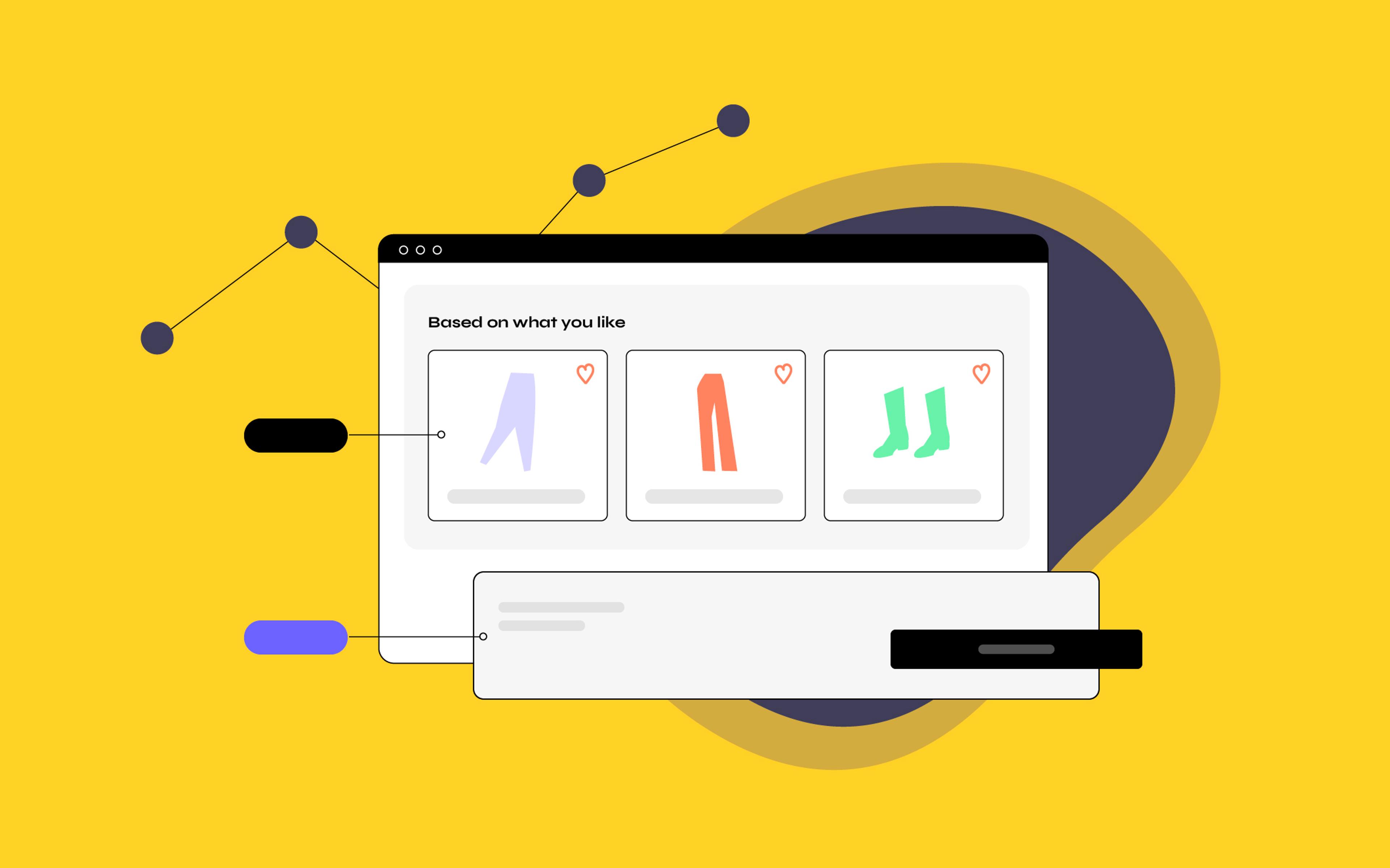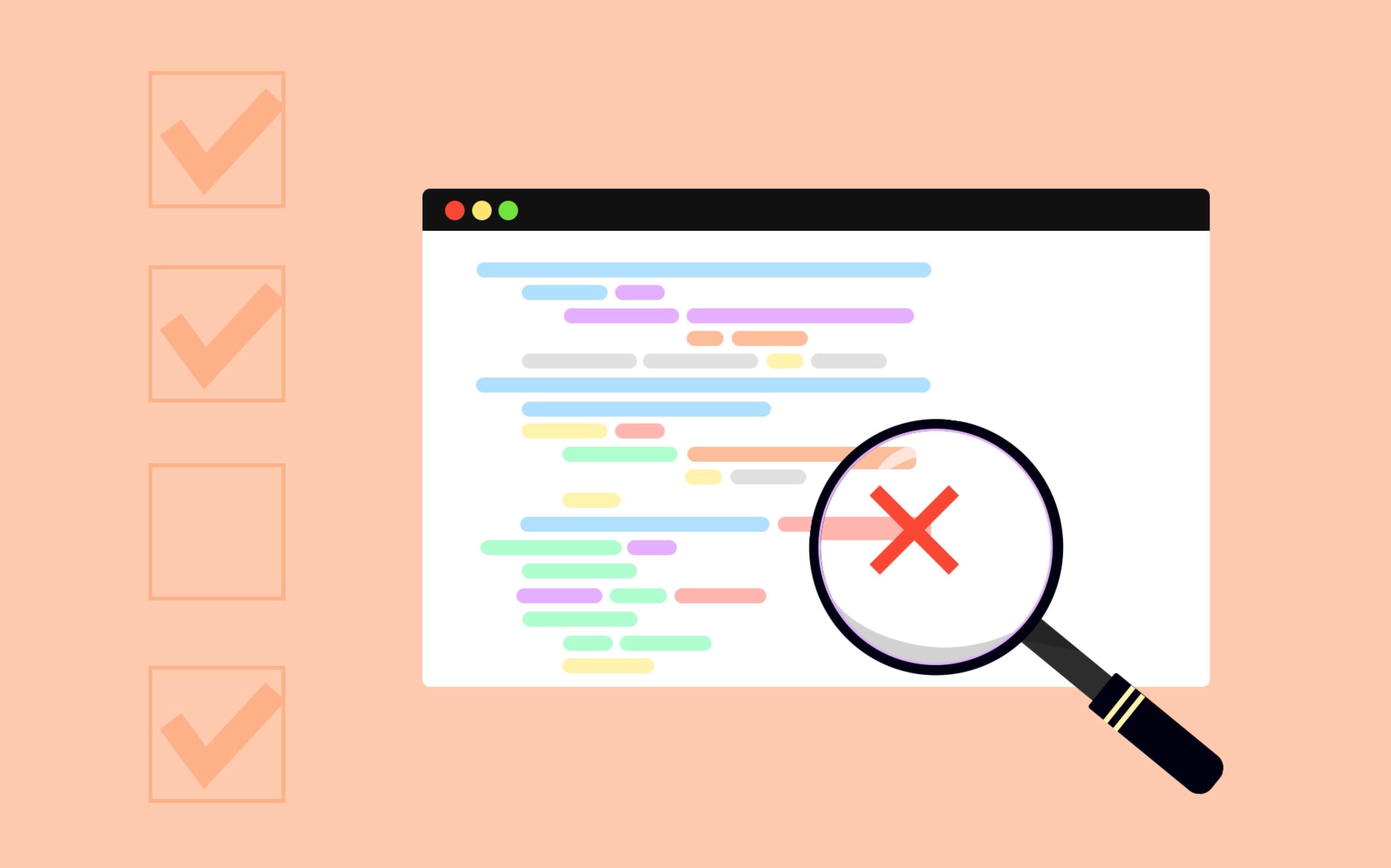With 9 out of 10 online shoppers stating that they want retailers to offer recommendations based on their interests, and considering the vast amount of data and technology brands now have, there are few excuses not to have a personalization strategy in place. eCommerce personalization is proven to increase conversion rates, customer retention, and lifetime value, creating a virtuous cycle that can turn your visitors into loyal customers.
And yet, we often see brands struggle with rolling out an effective eCommerce personalization strategy: founders aren’t sure how to segment their customers, evaluate the effectiveness of their personalization program, or what technologies to adopt.
This article will demystify eCommerce personalization, providing you with a straightforward, data-informed approach for designing, implementing, and validating your personalization program.
What Is eCommerce Personalization?
Much confusion stems from the vagueness of the term “personalization.” If you Google it, you’ll find books, articles, and SaaS products that all give it a different meaning: they talk about A/B testing, machine learning algorithms, retargeting, user-generated content… It can be hard to understand where to start.
At its core, eCommerce personalization is the technique of using the information you have about your customers to display content that is tailored to them. You can personalize across different dimensions (e.g., personalize by country, browsing history, demographics), at different touchpoints (e.g., your website, your email campaigns, your ads), and with different techniques (e.g., machine learning, user-generated content, human curation). No matter how you personalize, the goal is to create a customer experience that feels unique.
Designing Experiments with GTDT
When we coach founders that want to start experimenting with personalized eCommerce, we encourage them to think of personalization as the means, not the end. Like all initiatives, personalized shopping experiences must be designed thoughtfully and intentionally for maximum effectiveness. Adopting a tool or installing a plugin will only take you so far if you don’t have a clear understanding of what you want to achieve with your personalization program.
Unfortunately, most resources offer an endless list of personalization examples from famous online retailers but no indication of why or how those brands designed their personalization programs. This leaves operators scratching their heads as they try to replicate the success of these brands. As a result, they tend to go for “blanket solutions” that are easy to implement but ultimately leave the most exciting opportunities on the table.
Over time, we have developed a model that helps brands roll out thoughtful personalization experiments that get them closer to their goals. We call it GTDT, which stands for Goal, Technique, Dimension, and Touchpoint. In the following paragraphs, we will explain this process, providing you with all the tools you need to design your personalization program.
Goal
This might seem obvious, but surprisingly often, online stores will launch personalization capabilities to tick off a checkbox with no clear goal in mind. Unfortunately, this not only means they will roll out an ineffective personalization program, but it also means they will not be able to validate the effectiveness of their program: if you don’t know what metric you’re optimizing for, you will not know what metric to look at.
The first step for any good personalization experiment is to understand what goal you’re aiming for—everything else follows. Depending on your brand’s SKU catalog and business model, a personalization experiment for increasing your average order value will likely look much different from an experiment to improve your add-to-cart or repeat purchase rates.
If you’re unsure what goals you should be prioritizing, talk to your team and pick the one that feels most urgent right now. Where are you falling behind compared to the industry benchmarks and your (or your board’s) expectations? What are your customers telling you in your interviews? (You are doing customer interviews, right?) What are your plans for the next 12-18 months?
Don’t make the mistake of falling into analysis paralysis: the beauty of running experiments is that you can quickly pivot if you find that you’re optimizing for the wrong things. Make a data-informed decision, launch your experiment and move on!
Technique
With eCommerce personalization rising in popularity, several tools have emerged that promise to offer the definitive solution to all your personalization problems. A/B testing tools, content management systems, eCommerce platforms, UGC aggregators… almost every tool provides some level of personalization nowadays.
Unfortunately, without a clear personalization plan, it’s easy to get carried away by shiny object syndrome and try every tool in hopes that it will solve all your problems. Do this enough times, and you’ll end up with a Frankenstein monster of solutions that don’t integrate and annoy your customers with endless popups and broken UIs.
Before picking a tool or technology, decide how you want to personalize. You should do this, first and foremost, by continuously referring back to your experiment goal and dimensions, but you should also lean on your brand’s strengths and values. If you’re a fitness brand that’s all about community, you might want to leverage the power of user-generated content, at least in some of your experiments. If you’re a luxury brand selling elevated essentials, perhaps you can offer human-curated recommendations to your customers.
This last example brings us to the next point: don’t be afraid to do things that don’t scale, especially in the early stages of your company. Many brands go from zero to a hundred by integrating deep learning models that are complex to tweak and customize, and they don’t realize that they’re missing out on many lower-hanging opportunities. You’d be surprised by how much you can accomplish with some basic customer segmentation and a human touch.
Dimension
Once you know what you’re aiming for and how you want to get there, it should be easier to understand which dimensions you want to personalize across. For example, you might want to personalize content based on geography, customer lifetime value, previous purchases, demographics, or other factors.
It might help to group personalization dimensions into three big buckets:
- Historical. These are actions your customer has taken before. For instance, you might segment customers based on their AOV or purchase history.
- Demographical. These are traits that will always be true about your customer. For instance, you might segment customers based on geography, gender, or age.
- Contextual. These are actions your customer is taking now. For instance, you might segment customers based on their cart contents or session length.
When thinking about dimensions, don’t get limited by data availability: just because you don’t know your customers’ age, it doesn’t mean you shouldn’t use it in a personalization experiment. Part of your personalization program should be designing ways to collect or infer the information you need to carry out your experiments, which has the added benefit of enriching your understanding of your customers over time.
You also don’t want to limit yourself to generic customer data: we find that the most successful personalization programs use proprietary brand data to create win-win outcomes. If you sell pet food subscriptions, you might want to curate your product catalog based on the customer’s pet type or age. If you sell sports equipment, you could send your customers content specific to their favorite sports. Think about the different ways customers engage with your brand, and try to design your experiments to optimize and improve those interactions.
Touchpoint
With your goal, dimension and technique nailed down, it’s time to pick a personalization touchpoint. With this term, we’re referring to the specific customer interaction you want to personalize. This will likely depend on your goal and dimension: for example, if you want to increase AOV (goal) by looking at cart contents (dimension) to suggest upsells (technique), you can only do this after the customer has added something to their cart or completed their purchase.
When deciding which touchpoint to personalize, we encourage brands to look beyond their product pages or on-site user experience. Even with the average brand, there are so many ways your customers might interact with you and so many opportunities to personalize those interactions. The most effective personalization programs are omnichannel and focus on often-neglected interactions, such as transactional notifications, or create entirely new touchpoints, such as sending customers a personalized card for their birthday.
Again, don’t get limited by your current touchpoints: if you want to send personalized email campaigns but are currently not doing any email marketing, don’t be afraid to start now. If you think push notifications might resonate with your customer base, why not give them a try?
The goal is to catch your customers when they need personalization even though they don’t know it, and leverage the power of data to turn a mundane interaction into an intimate, personalized experience.
Measuring Experiment Effectiveness
Designing and launching your experiment is only the first step. For an effective personalization program, you want to validate the effectiveness of your experiment, double down on the ones that work, and kill the ones that don’t.
To do this, you must go into every experiment with a clear definition of success. This means answering the following questions:
- What metric(s) do you expect the experiment to move, and in what ways?
- Are you already measuring the metrics you need? If not, how can you measure them? Do you need time to get a baseline for comparison?
- For how long will you let the experiment run after measuring the results?
A/B Testing vs. Attribution Models
A special mention here goes to A/B testing: like with AI/ML, inexperienced founders often jump into A/B testing without a clear understanding of the technique. While it’s tempting to run all personalization experiments as A/B tests, sometimes this can be overkill or even detrimental: A/B tests require specific expertise, dedicated infrastructure, and relatively high traffic volumes to reach statistical significance.
Typically, we only recommend A/B testing for large brands, running experiments where the results are highly uncertain, and a clear control group can be established (e.g., customers that see the regular homepage vs. customers that see the personalized homepage). In all other scenarios, a robust attribution model is a more reliable way to measure the effectiveness of your experiment—even better when it’s paired with qualitative customer insights.
Following Through on Experiment Validation
However you decide to validate your experiment, make sure it’s easy to roll back if needed and remember to look at the data and take action accordingly! A recurring “experiment review” meeting with your team, where you review all experiments that need to be validated and decide how to move forward, can do wonders to keep you accountable.
Finally, don’t be too rigid: if you expected a cross-selling experiment to drive $100K in revenue, but it only drove $80K, it might still be worth keeping, depending on the effort you need to turn it into a permanent, first-class capability. For some experiments, it might be helpful to establish different thresholds of success. Going back to our example:
- Anything below $50K might be a clear failure.
- Anything between $50K and $100K might be up for discussion.
- Anything above $100K in incremental revenue might be a clear success.
Generally speaking, whenever you make decisions about your digital experience, you want to be data-informed, not data-driven.
Ready to Start Personalizing?
eCommerce personalization can create remarkable outcomes: when leveraged intentionally, personalization programs increase revenue, customer loyalty, conversion rates, and lifetime value. It’s a tool that should be part of every eCommerce store’s marketing strategy.
With the GDTD model, you have a streamlined process to design, launch and validate your personalization experiments. It’s a high-impact tool that evolves with your brand as you scale, better understand your customers, and develop more sophisticated ways to engage them.
If you have questions or need help with your brand’s personalization program, we’d love to hear from you. Let’s start personalizing!



